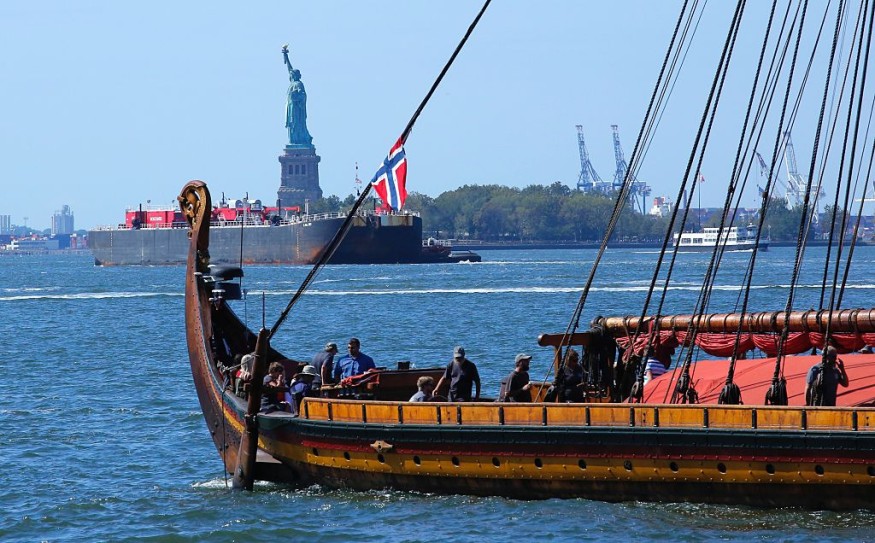Christopher Columbus undertook four voyages across the Atlantic Ocean from Spain to discover a direct sea route from Europe to Asia, as per History. However, he inadvertently discovered the Americas; and his expeditions initiated a period of exploration and colonization of North and South America that lasted for centuries.
However, some scientists claim that Columbus was not the first to discover the Americas. Some believe that the Vikings have already reached the Americas long before Columbus did. Now, a new study supports this claim with new evidence that proves the Vikings were there first before Columbus.

Competitors of Columbus Who Might Have Found the Americas Before Him
Aside from Christopher Columbus, there are competing theories that suggest other groups of people first landed in the Americas. Eric Weiner wrote in NPR some of these theories, starting with the Irish Monks who arrived in the sixth century.
Legend has it that a sixth-century Irish monk named Saint Brendan sailed to North America on a wood-framed boat covered with animal skin, but there is no evidence to support this. However, in 1976, Tim Severin replicated Brendan's boat and sailed along a route described by the monks, ultimately landing in Canada, proving that the journey was possible.
Around the year 1000 A.D., Leif Erikson, a Viking explorer, sailed to what is now Newfoundland and called the place "Vinland." Although their stay was short-lived due to hostile relations with native North Americans, the Vikings' early expeditions to North America have been documented, with evidence of an ancient Norse settlement uncovered in 1960.
Gavin Menzies, a retired British Naval officer, and his team of scholars and amateur historians claim that a Chinese explorer named Zheng He, who commanded a large fleet of wooden sailing vessels in the early 15th century, discovered America 71 years before Columbus did. However, Menzies' theory, which is presented in his book 1421: The Year China Discovered America, has been widely disputed by historians, who argue that his claims are unsupported and lack evidence.
New Evidence Supports the Theory of Vikings Arriving in the Americas
Among the three theories, a new study has found new evidence in support of Vikings arriving in the Americas 500 years before Columbus did in 1492. According to MailOnline, researchers from the University of Iceland analyzed wood from five different Norse sites in western Greenland where Vikings used to live between the years 985 and 1450.
They found that the tree species used in the Norse sites are not native to the land, which means that these materials had been imported from the Americas and Europe.
The new study, titled "Timber Imports to Norse Greenland: Lifeline or Luxury?" published in the journal Antiquity, has provided further evidence that Vikings sailed to North America and imported timber from the continent for shipbuilding, large building projects, and producing artifacts.
They identified that some of the wood came from species that did not grow locally, such as hemlock and Jack pine. These findings support some Viking sagas that mention importing timber from Vinland.
The authors noted that these findings highlight Norse Greenlanders' capability of crossing the Davis Strait to the east coast of North America. They also found that a quarter of the samples were either imported or arrived in Greenland as driftwood, with species including larch, spruce, Scots pine, and fir. Driftwood, as well as timber from local woodlands, which was used for fuel and domestic purposes.
RELATED ARTICLE: Dozens of Viking Round Shields Unearthed in Norway Were Also Used in Battles Not Just for Ceremonial Purposes, Study Finds
Check out for more news and information on Vikings in Science Times.












